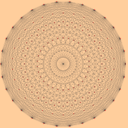
Arizona Winter School 2001
Clozel's Project Description
In one of my lectures I will try to sketch Kottwitz's proof that the Hasse-Weil zeta functions of certain Shimura varieties are the L-functions of automorphic forms. I think it good for any student of number theory to understand the structure of this proof in the easier case of modular curves.
The project, then, is to describe in that case the `Ihara-Langlands' approach to the zeta function. This is, in essentials, explained - following Kottwitz- in Section 3 of my Bourbaki talk:
Nombre de points des variétés de Shimura sur un corps fini (d'après Kottwitz), Sém. Bourbaki #766 (92/93), Exp. 766, Astérisque 216 (1993)
The first part of the project is to understand this proof (and correct any mistakes...); for that some tincture of the modular definition of modular curves is required, see
Katz-Mazur, Arithmetic moduli of elliptic curves, Ch. 1, 3 (Gamma/O(n)-structures)
Note however that nothing fancy is necessary as we will not study bad reduction. One also needs some notion of the Selberg trace formula in this simplest case, see the formulas in Section 6 of
Duflo-Labesse, Sur la formule des traces de Selberg, Ann. E.N.S. 4, 1971, 193-284.
(I do not advise reading this as a first introduction for a number theorist, in fact we'll treat it as a black box.)
My exposition (in Bourbaki) is incomplete as I do not treat the cusps. We should deal with that. For this I'll bring notes by Kottwitz (if he agrees); this could be prepared for by looking at the construction of the cusps (Katz-Mazur ch. 8), but we might manage with
Deligne-Rapoport, Les schémas de modules de courbes elliptiques, Springer L.N.349
(Warning: I'm not an algebraic geometer, so I hope some students will actually know this better than I do.)
Once this is understood we'll have to explain how to associate a Galois representation to a modular form. This requires 2 things: 1. Obtain a variant of the `# of points' formula where one twists by a correspondence. 2. Explain the phenomena of multiplicity one.
This theme could form the subject of a write-up which would then be the only clear(?) and public exposition of this topic.
In conclusion, if things go well, I would like to explain how the Selberg trace formula approach to the number of points yields the relation between the number of supersingular curves and the genus of Gamma/0 (N) -- something explained quite differently by the geometry of bad reduction, cf. Katz-Mazur Ch. 13. This is new (or at least: is not in the literature); it could be treated by a student who knew (at the beginning of the workshop) a sizable part of the above. One also needs some representation theory of p-adic GL(2).